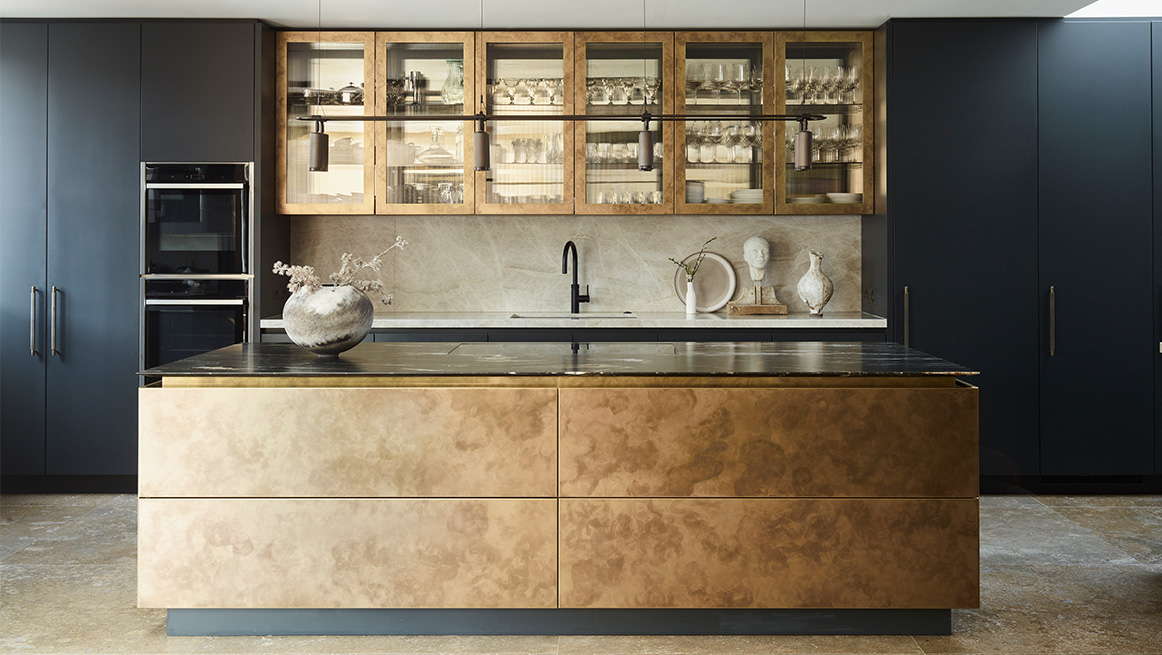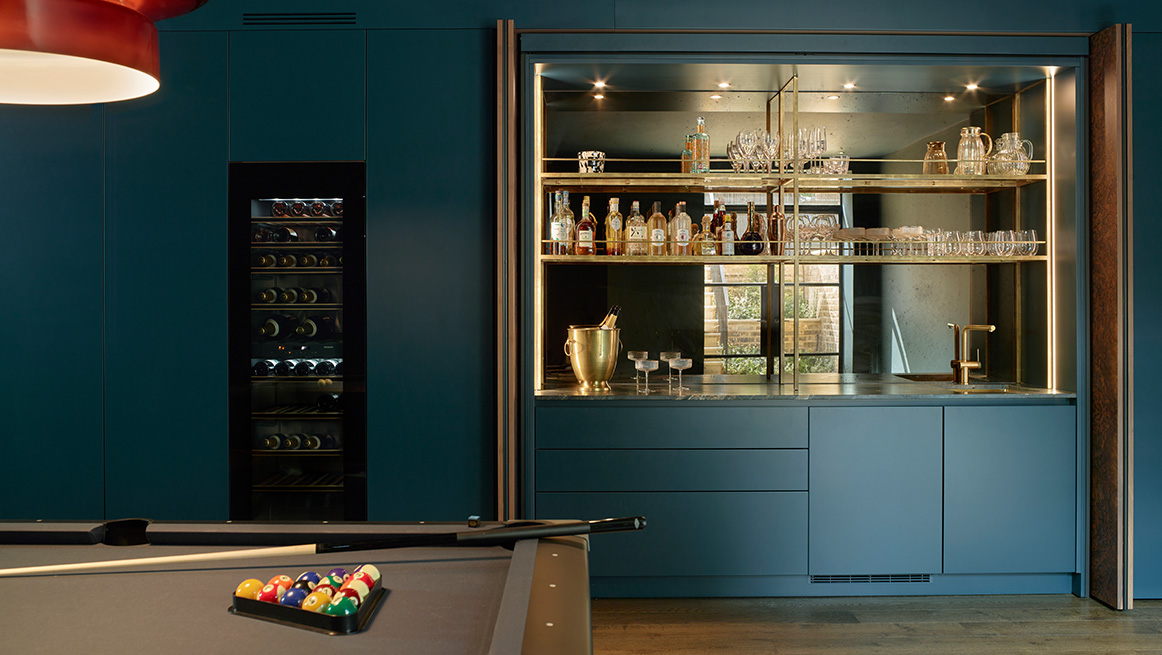Kitchen lighting trends 2026: The brightest ideas emerging now
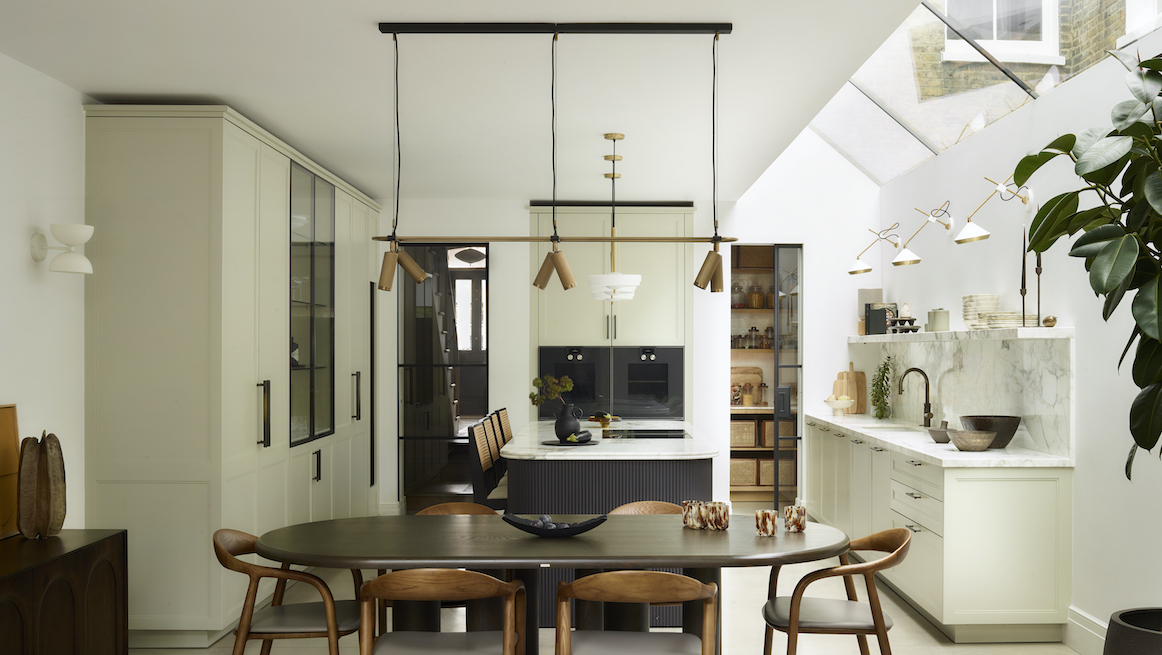
Lighting has always mattered in the kitchen, but as the space becomes increasingly multifunctional, the latest ideas are shaping it more profoundly than ever. Next year’s lighting trends aren’t just decorative flourishes, they’re influencing how we plan layouts, define zones and shape the emotional tone of the home. Illumination is becoming part architecture, part art form, and in bespoke kitchens that fusion is unlocking extraordinary creative potential.
Rather than relying on the familiar spotlight-and-pendant formula, kitchen trends 2026 point towards more layered, expressive schemes that introduce personality, dimension and a sense of theatre. At Roundhouse, we’re anticipating a more fluid, decorative approach to illumination in the months ahead, from bold statement pieces to lighting that behaves like furniture. It’s clear that lighting is now one of the most transformative tools in contemporary kitchen design.

Curves & crescents
Crescent profiles and soft arcs are shaping the future of kitchen lighting, bringing a gentle fluidity to the clean lines typical of contemporary cabinetry design. This shift has been building for several seasons, driven by high-profile designers who favour organic silhouettes – names like Tom Raffield,John Pomp, and Lindsey Adelman, all of whom have championed curved glass, halo forms and sculptural circularity across their collections. Their work has reintroduced the idea that lighting can be both architectural and poetic, with circular forms diffusing light beautifully to cast a warm, organic glow.
In our Ashbury Project, Tom Raffield’s Loer Crescent Pendant demonstrates the power of curved illumination. Suspended over the breakfast bar, its celestial shape adds quiet drama without dominating the space. Curved or crescent lighting works particularly well in high-traffic family kitchens where softer silhouettes promote a calmer, more inviting atmosphere. As a bonus, rounded shapes pair effortlessly with natural materials such as timber, stone and plastered finishes – key ingredients in many Roundhouse bespoke kitchens.
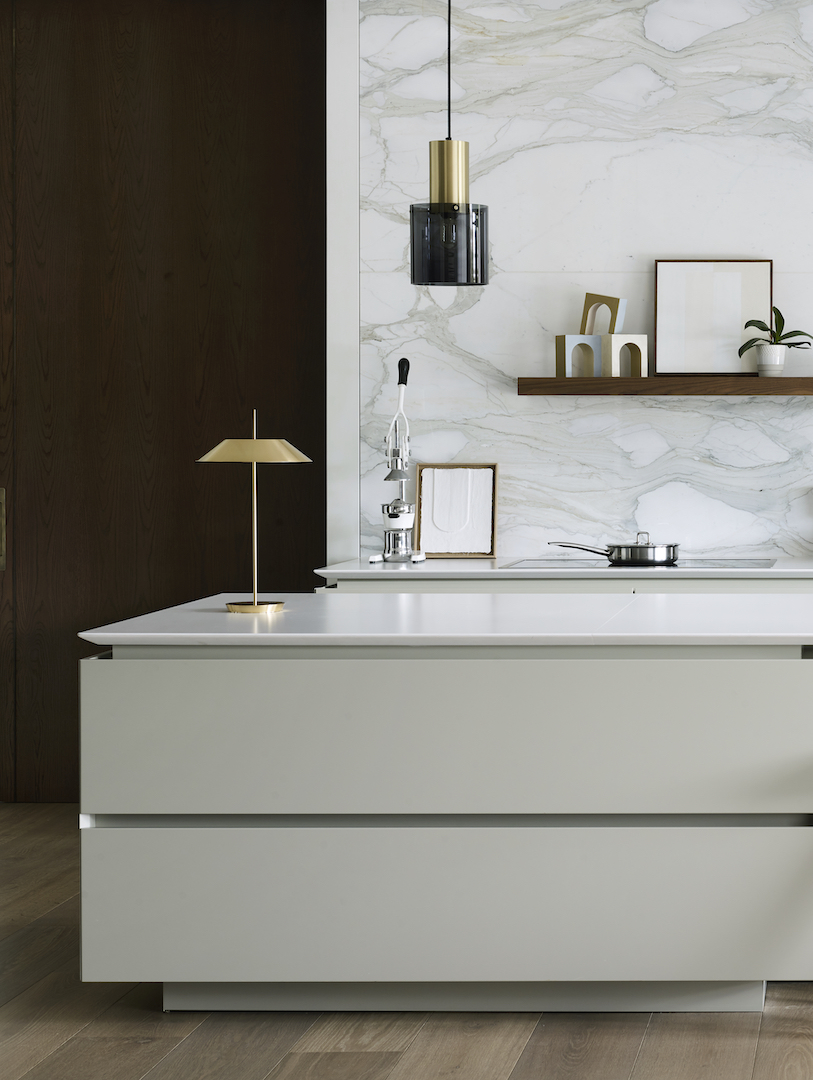
Living room influences
Another defining move for 2026 is the growing influence of living room-style lighting in hardworking kitchen spaces. This shift has been gaining momentum thanks to designers such as Bert Frank, Matteo Bianchi, and Gabriel Scott, who champion the idea that decorative lighting can enhance practicality rather than compromise it. As a result, kitchens are beginning to borrow from domestic lounge environments. Not just with wall lights and sculptural sconces, but increasingly with table lamps – the unexpected presence of a table lamp in the kitchen instantly softens the space and makes it feel more lived-in.
Roundhouse’s Ling Project illustrates this beautifully with Vibia’s Mayfair table lampin gold satin. Its soft glow and touch dimmer control brings a touch of salon-style sophistication to the island, proving that kitchens can, and should, lean into warmth and atmosphere. This approach is especially valuable in open-plan homes where visual cohesion between zones matters.
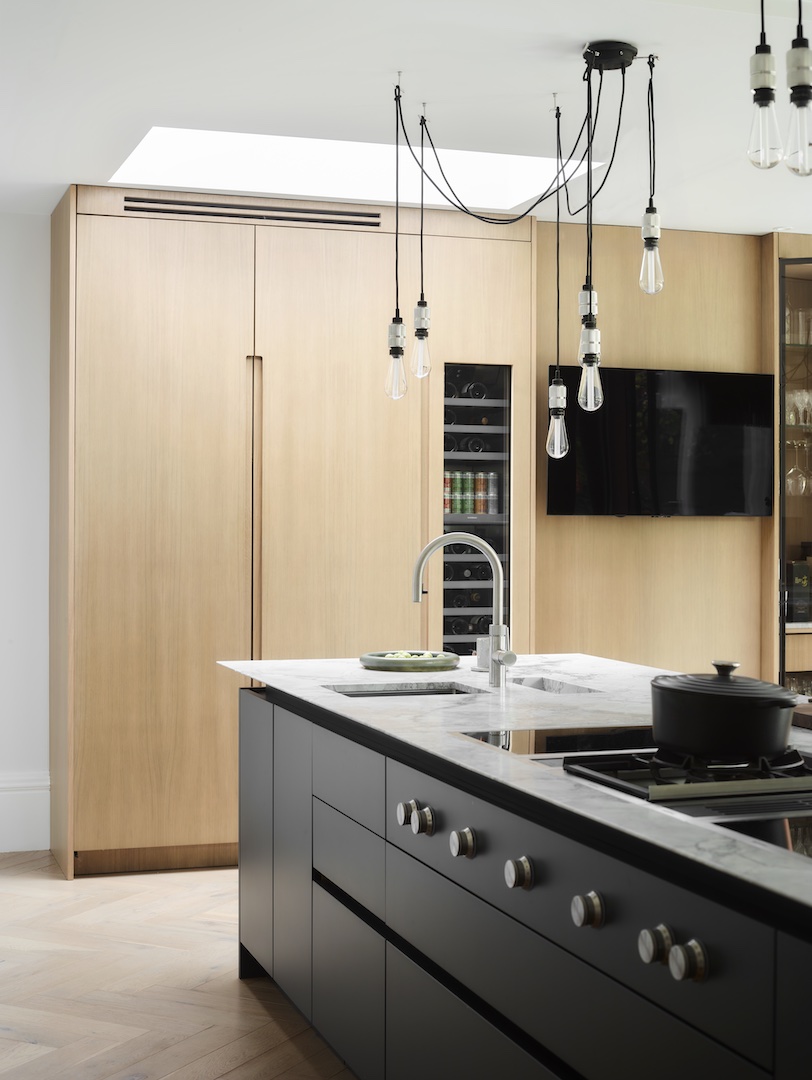
Customisable fittings
Personalisation continues to dominate interior design, and lighting is no exception. The rise of customisable fittings stems from broader shifts in high-end lighting design, where brands such as Buster + Punch, Martin Huxford, and Porta Romana have championed modularity, mix-and-match components and adaptable silhouettes. As homes become more multifunctional, designers have embraced fittings that can evolve with the space – from adjustable cords and pivoting heads to interchangeable shades and fully modular configurations. Flexibility is becoming a luxury in its own right.
Our Weir Project showcases this perfectly with Buster + Punch’s Hooked 6.0 Pendant Nude. Each element can be repositioned or reconfigured, allowing the light to shift from functional task illumination to something more sculptural. For bespoke kitchens in particular, this adaptability is invaluable – it allows designers to respond to architectural quirks, multifunctional layouts and the shifting needs of family life. Expect customisable lighting to remain one of the most enduring design trends of the decade.
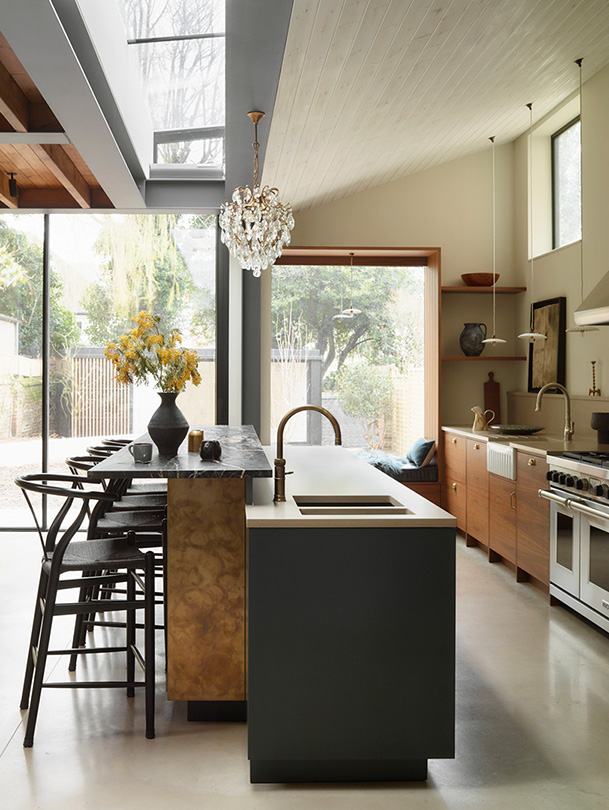
Mix-and-match eras
Eclecticism is entering a more curated, refined phase, fuelled by a growing desire for interiors with authenticity, soul and narrative. This mix-and-match lighting trend has been shaped by designers such as Kelly Wearstler, Beata Heuman and Martyn Lawrence Bullard, who frequently blend vintage pieces with contemporary architecture (and vice versa) to create depth and contrast. As homeowners move away from perfectly matched schemes, they’re embracing lighting that feels collected rather than coordinated – pieces with patina, history and a sense of discovery.
In our Moony Project with Webb Architects, a vintage chandelier is suspended in a modern-take on Arts & Crafts kitchen design – a combination that brings instant character and narrative richness. This juxtaposition works brilliantly in homes where the kitchen forms part of a broader architectural story. A well-chosen heritage light fitting can anchor a sleek modern scheme, while nearby contemporary fittings prevent the look from tipping too far towards traditional.
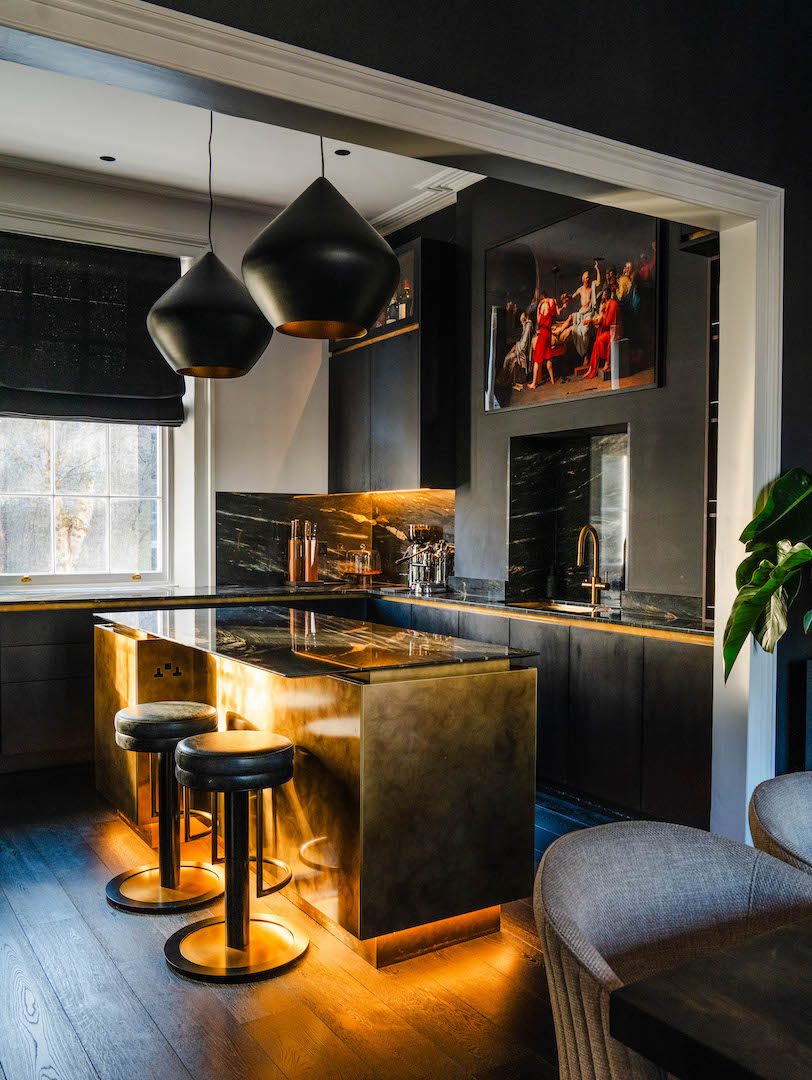
Supersized pendants
For those ready to make a bold statement, oversized pendants are stealing the spotlight. This trend has grown out of the wider move towards sculptural, gallery-like lighting popularised by brands such as Tom Dixon, Bomma, and Moooi, all of which have embraced exaggerated scale, hefty silhouettes and architectural presence. As kitchens become larger, more open and more connected to living spaces, bigger pendants offer both the drama and the generous illumination these spaces demand.
This kitchen project in collaboration with QWC Stone (photo by Carmody Creative) makes full use of this approach with Tom Dixon’s Beat Stout LED pendants, which, at 51cm in diameter and 50cm tall, are impressively upscaled. Their sculptural presence elevates the kitchen instantly, creating a focal point that is functional and impactful. Supersized pendants work best when they’re given plenty of breathing room – aim for simple sightlines and use complementary materials so the scale feels intentional, not overwhelming.
Ready to reimagine your kitchen lighting? Visit a Roundhouse showroom to explore these trends first-hand and discover how our kitchen designers can transform your space.
Frequently Asked Questions – Kitchen Lighting
What makes curved and crescent-shaped lighting a key kitchen trend for 2026?
Curved and crescent-shaped lighting is gaining prominence because its soft, organic silhouettes create a calming atmosphere and complement contemporary kitchen materials like timber, stone and plaster. Designers such as Tom Raffield and Lindsey Adelman have championed these sculptural forms, which diffuse light beautifully and add gentle drama to modern bespoke kitchens.
How is living-room-inspired lighting influencing kitchen design?
Living-room-style lighting—such as wall lights, sculptural sconces and even table lamps—is reshaping kitchens by adding warmth, atmosphere and a more lived-in feel. As seen in Roundhouse’s Ling Project, pieces like Vibia’s Mayfair table lamp help create visual cohesion in open-plan homes while enhancing practicality through softer, ambient illumination.
Why are customisable lighting fittings becoming so popular in bespoke kitchens?
Customisable fittings are rising in popularity because they offer flexibility, adaptability and personalisation. Modular designs, adjustable cords, pivoting heads and interchangeable components allow lighting to evolve with multifunctional kitchen layouts. The Weir Project’s use of Buster + Punch’s Hooked 6.0 Pendant Nude highlights how reconfigurable lighting can shift seamlessly between task and decorative roles.
How can mixing vintage and contemporary lighting elevate a kitchen design?
Blending eras creates depth, character and a sense of narrative. Designers like Kelly Wearstler and Beata Heuman have inspired this curated eclecticism, where vintage pieces introduce authenticity while contemporary lighting keeps the look balanced. In Roundhouse’s Moony Project, a vintage chandelier paired with modern Arts & Crafts-influenced cabinetry shows how contrasting eras can enrich a kitchen’s architectural story.

